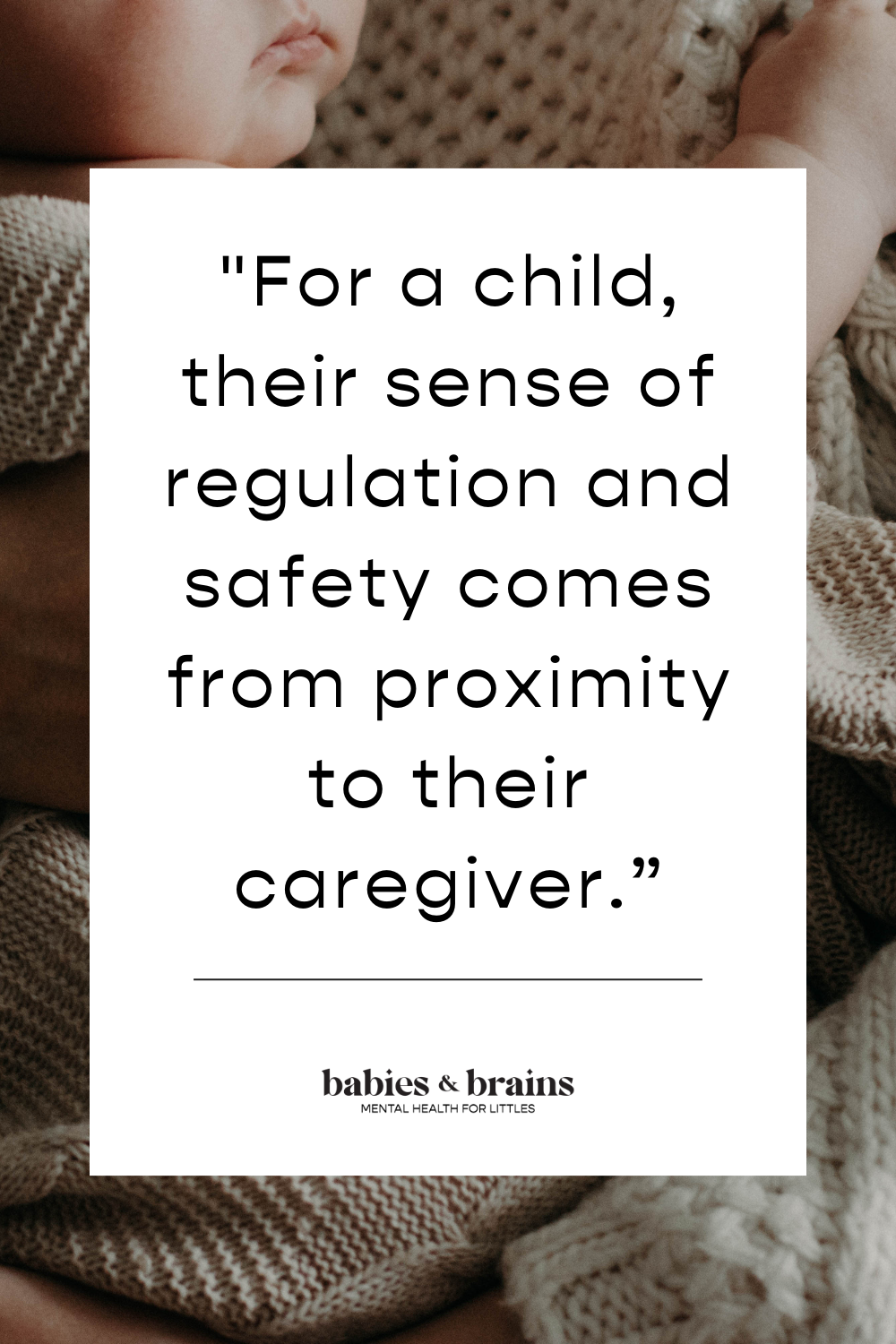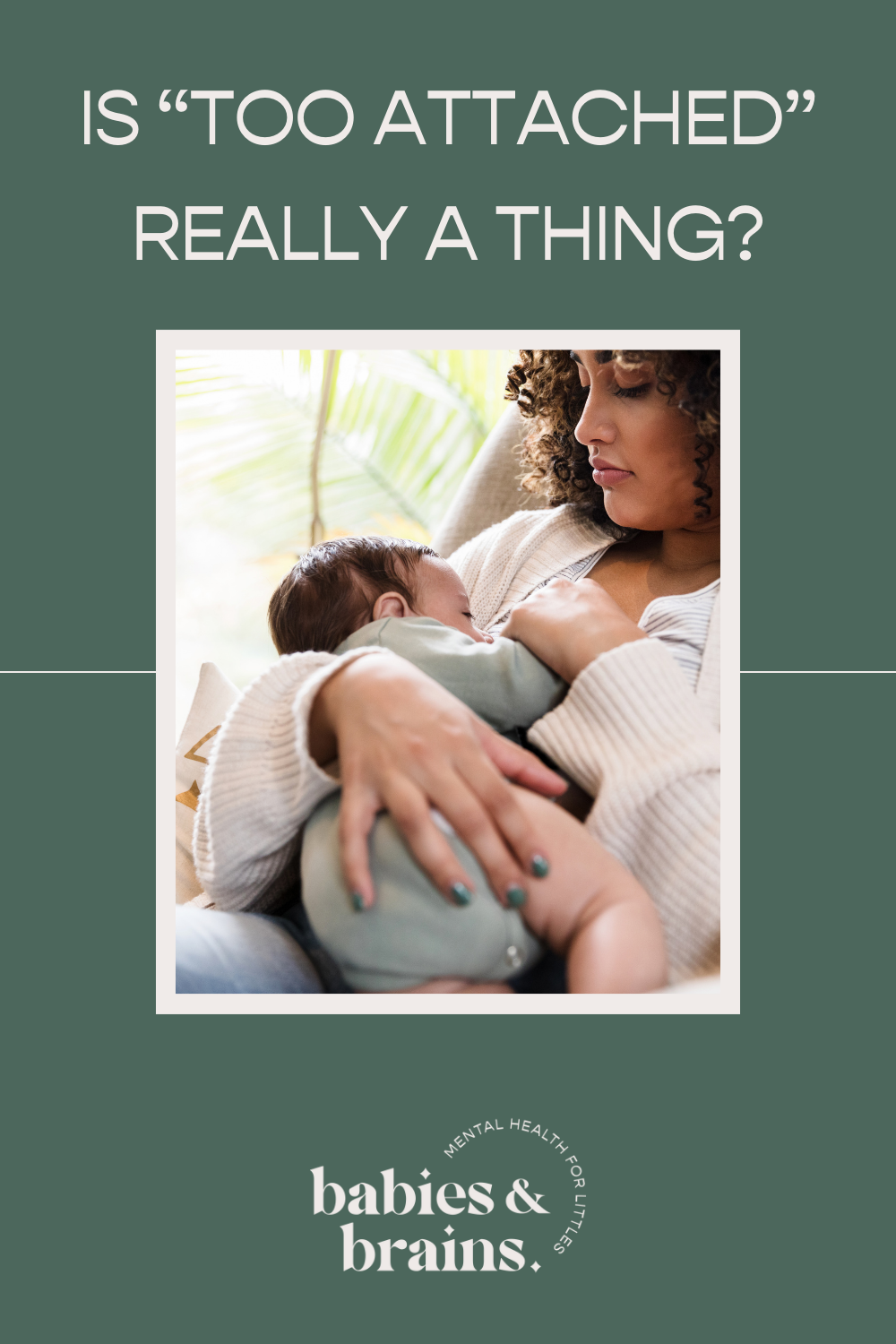Is “too attached” really a thing?
“I took my child to a family gathering and someone commented that they were “too attached” because my child didn’t want to be held by them. Is that true?”
First, I’m just going to say it: THERE IS NO SUCH THING AS TOO ATTACHED.
When someone observes that a child prefers to be near their parent, does not want to separate from their parent, or does not want to be held by other people, children are sometimes accused of being “too attached,” and parents are sometimes blamed for “making” their children this way.
These very normal behaviors are seen as a deficit, a problem that needs to be fixed, a reflection of bad parenting. In reality, these behaviors reflect none of the above.
When we consider attachment science and a child’s biology, it makes sense that a child would prefer to be near their familiar caregiver(s). Especially early in life, children are completely dependent on their caregiver(s) to meet all of their needs. Their caregiver is their source of safety, comfort, nourishment, shelter, protection, and nurturance.
Separation from that primary caregiver (even separations that seem “small” and “unserious” to us) alarms the child, especially in unfamiliar environments with unfamiliar people. Quite often, these comments are made in unfamiliar settings with unfamiliar people.
Family gatherings can be overstimulating for many reasons:
noise from multiple conversations, holiday music
multiple food smells mixed together
decorations, lighting, piles of presents
hugging, touching
eye contact with multiple people
As adults, we have fully developed brains that can attempt to cope with this overwhelm. For a child, their sense of regulation and safety comes from proximity to their caregiver.
Of course, temperament may play a role. There are children who crave more stimulation and love interacting with people. This is not necessarily a reflection of their attachment quality. But, for children who are encountering new people, in strange places, with overwhelming stimuli, and they prefer to stay next to their caregiver, this does not mean that they are “too attached.”
There is no such thing as a child having too secure of an attachment. This is a child doing exactly what they are innately primed to do in order to feel safe.
Forcing a child to be held by someone they don’t feel comfortable with, does not actually help them feel more comfortable or “get used to” this person. It does the opposite. It tells the child that their cues are misunderstood and ignored, and prompts them to need to access their source of safety even more. To help children feel comfortable, we have to follow and honor their cues, and support them in feeling safe.
Children feel safe with new people and places by being exposed to these novel situations with access to their caregiver. Telling the caregiver to leave so the child will accept the strange person, does not help. What helps is the caregiver being present, calm, available, and supporting the child.
If someone wants to hold your child and they are uncomfortable, the better option would be for you to hold your child in your lap and sit near this person while you converse calmly. Your child may take this as a cue that this person is safe and warm up a bit, but they also still may not want to be held by this person.
At the end of the day, it is not your child’s job to warm up to another person to make that person feel fulfilled and liked.
If someone is not okay with honoring your child’s cues and giving them space, that is not a problem you need to fix with your child. This is a personal problem for that specific adult that quite honestly could use some further reflection. Of course, there are situations where we need to support a relationship between our child and a new person (like a new childcare provider), and we can support that in a way that honors their attachment. That is different than an offended adult your child sees twice a year.
So remember: There is no such thing as too attached, and it is not your child’s job to quickly warm up to someone in order to avoid offending them.
Want to learn more about attachment? Grab my FREE attachment guide here: Get the free attachment guide
Was this helpful?
Click and save it for reference!





